Today I want to show you a tour of our universe.
In everyday life, few people pay attention for this beauty that is around us, you only need to lift up your head. Our universe is a unique and very beautiful place.
All the photos were shots by me.
For some description, the English text has been taken from the NASA site. Because, My English isn't that great and I think they know about space more than anyone on the planet. I have provided a Russian translation for my shortened version of the NASA text.
So here we go: Close to us is a famous Dumbbell Nebula
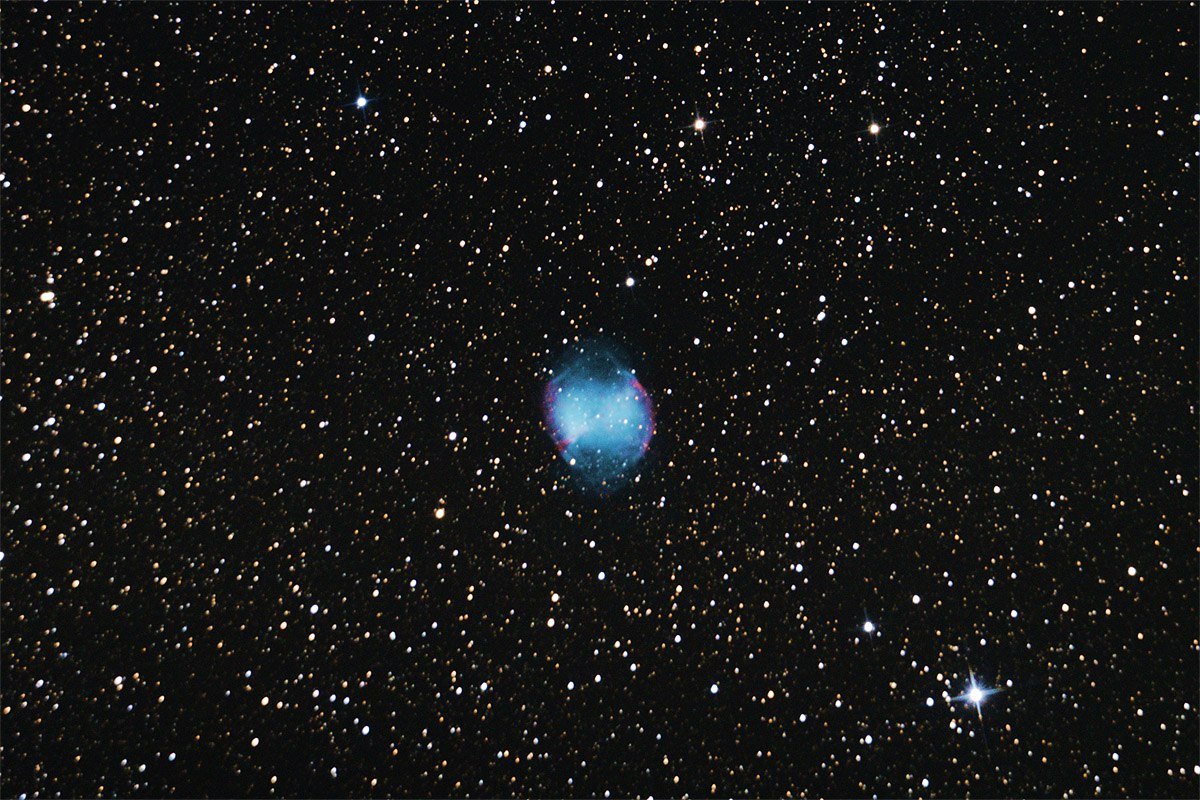
Dumbbell Nebula, or M27 - This is a very good example, of how star has become a multi-colored cloud of gas. It was discovered in 1764 by the famous Frenchman Charles Messier in 1250 and is located in the light-years away from our planet. Dumbbell Nebula came in space only about 3 or 4 thousand years ago. By the way, I wanna say, that nebula is the last stage of life of a star. Star come into this phase in the last years of his life. It is clearly visible ,as it is located not too far from earth. It has a very beautiful color, which can be enjoyed forever
Туманность Гантель или М27 – Это очень хороший пример того, как звезда превратилась в разноцветное облако газа. Она была открыта в 1764 году знаменитым французом Шарлье Мессье и находится на данный момент в 1250 световых годах от нашей планеты. Туманность Гантель появилась в космическом пространстве всего около 3 или 4 тысячелетий назад. Стоит отметить, что туманность является последней стадией жизни звезды. Звезда вступают в эту фазу в последние годы своей жизни. Очень хорошо заметна, так как расположена не так далеко от земли. Имеет очень красивые цвета, на которые можно любоваться вечность.
Photo by me. I used Сanon 550d ( iso 3200 , 60х15 sec) and Teleskope SW 150/750 EQ3
Nasa Explanation - http://apod.nasa.gov/apod/ap150820.html
Moving on. Far away from us is a wonderful galaxy called M101
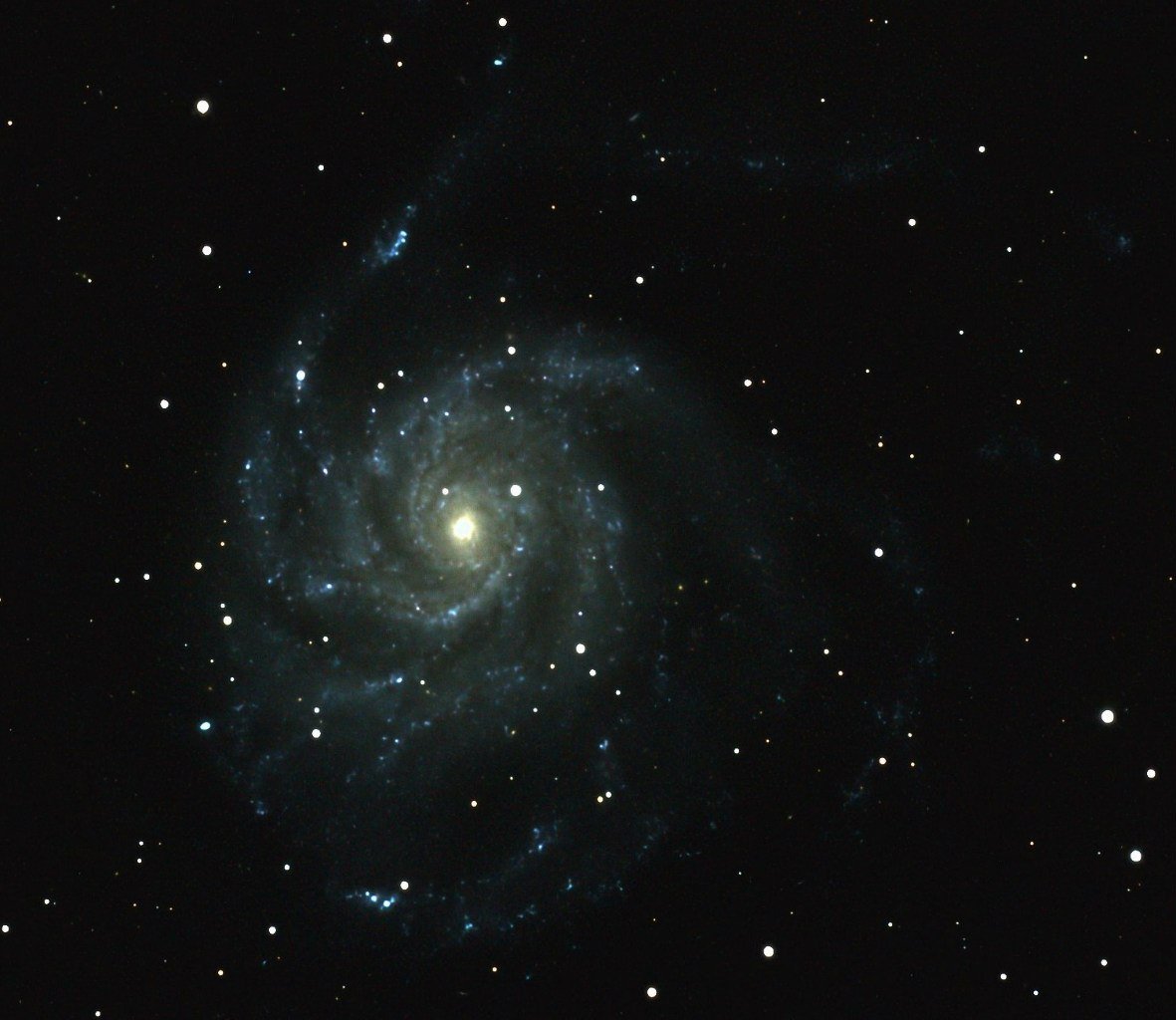
M 101 - large spiral galaxy, which is placed on a 25 million light years from earth. The huge size and incredible beauty makes it an excellent target for observation. It is about 70% larger than our Milky Way galaxy. The discovery was made by Pierre Mechain March 27, 1781. We see a huge spiral arms, which extend from the core of the galaxy. Blue color that we see around the coilsfrom the words scientists, this warm gas around neutron stars and black holes.
М 101 - Большая спиральная галактика , которая располагается в 25 миллионов световых лет от земли.Огромный размер и невероятная красота делает ее отличным объектом для наблюдения. Она примерно на 70% больше нашей галактики Млечный путь. . Открытие было сделано Пьером Мешеном 27 марта 1781 года.Мы видим огромные спиральные ветви , которые отходят от сердцевины галактики.Голубой цвет, который мы видим вокруг спиралей, со слов ученых, является теплым газом окруженными нейтроными звездами и черными дырами
Photo by me. I used Сanon 550d ( iso 3200 , 43х300 sec) and Teleskope SW 150/750 EQ3
Nasa Explanation - http://apod.nasa.gov/apod/ap120713.html
Keep going. The unique combination of just 3 galaxies. They called - Leo Triplet
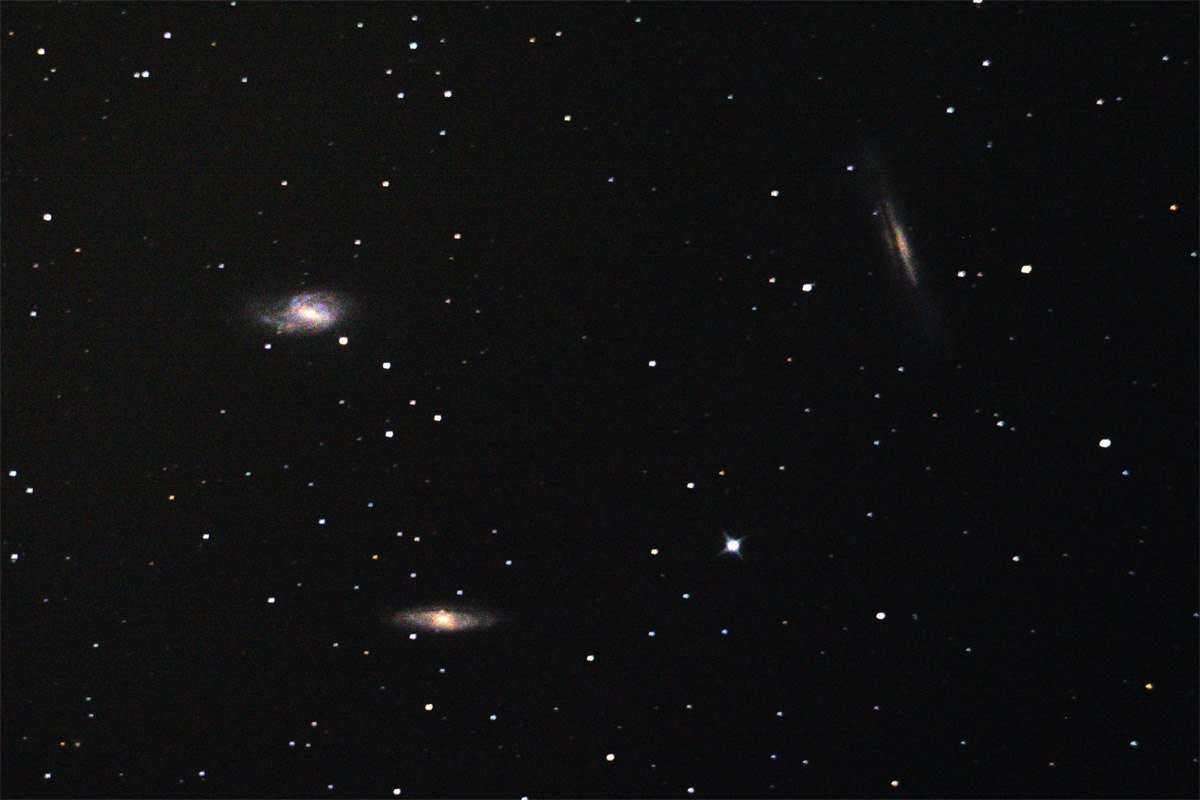
Leo Triplet - a collection of three spectacular looking for observations of galaxies. Even a small telescope will show the power of amazing images. This cluster of galaxies are located 30 million light years from our planet, and their name: M65, M66 and NGC 3628. Winter and spring seasons will be optimal for observation, but it would be better to leave the city.All of these galaxies are spiral - like our own Milky Way.
Триплет Льва – это собрание из трех впечатляюще выглядящих для наблюдателя галактик. Даже телескоп небольшой мощности способен выдать потрясающее изображение. Данное скопление галактик располагается на расстоянии 30 миллионов световых лет от нашей планеты, и именуются галактики следующим образом: M65 , M66 и NGC 3628. Зима и весна станут оптимальными временами года для наблюдения, но лучше будет уехать за город. Все перечисленные галактики относятся к спиральным – таким как Млечный Путь.
Photo by me. I used Сanon 550d ( iso 800 , 122х30 sec) and Teleskope SW 150/750 EQ3
Nasa Explanation - http://apod.nasa.gov/apod/ap110803.html
Next we see the Huge and stunning galaxy called Andromeda

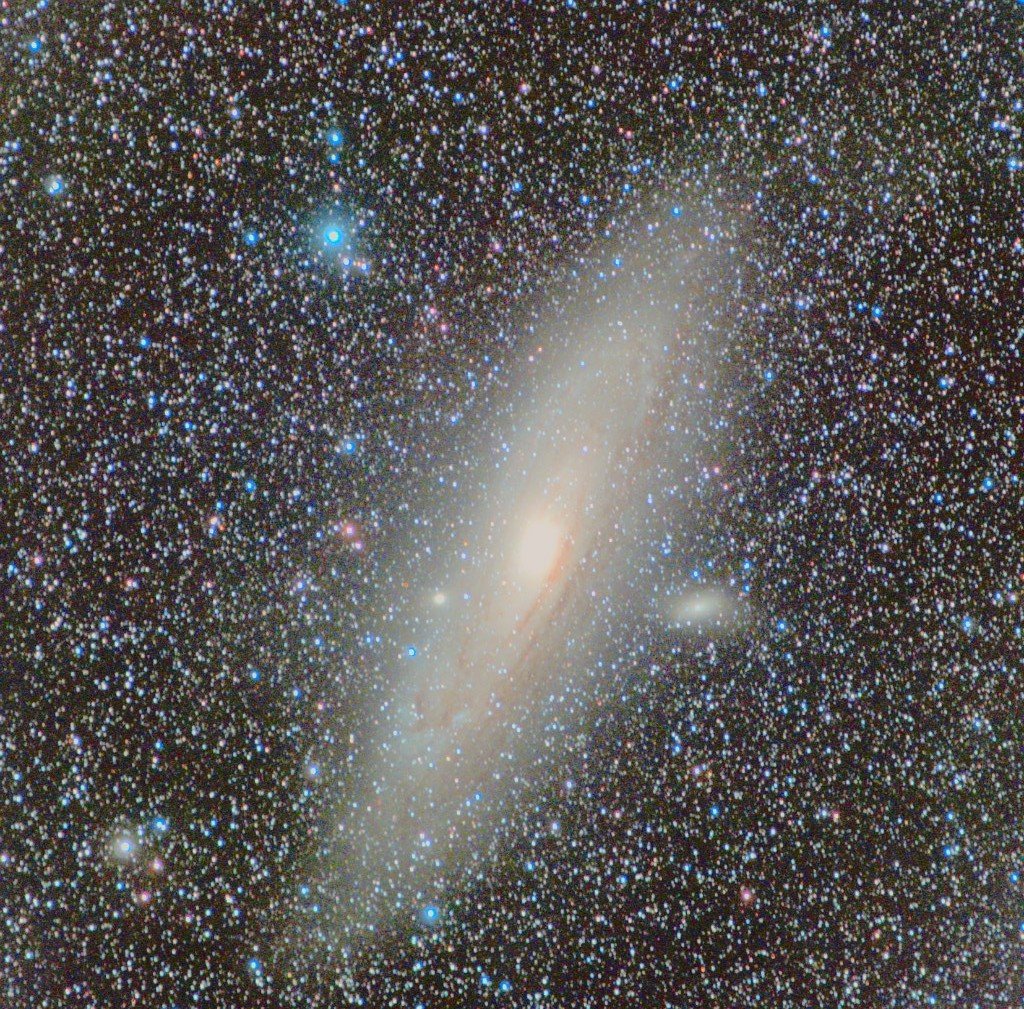
Andromeda Galaxy (M31 or NGC 224) - this is the closest galaxy to our Milky Way. Andromeda is located two and a half million light-years away from our planet. It accommodates 1 trillion stars, which is 5 times more than in our galaxy. At the moment not found proof of the existence of extraterrestrial life, but among such a large number of stars probably find that star, close to where is a planet suitable for life. If you believe the scientists, Andromeda and the Milky Way collide with each other in 3 - 5 billion years
Галактика Андромеда ( M 31 или NGC 224) – это ближайшая галактика к нашему Млечному пути. Андромеда находится на расстоянии двух с половиной миллиона световых лет от нашей планеты. В ней расположено около 1 триллиона звезд, что в 5 раз больше чем в нашей галактике. На данный момент не найдены доказательства существования внеземной жизни, однако среди такого огромного числа звезд наверняка найдется та звезда, рядом с которой будет планета, пригодная для жизни. Если верить ученым, Андромеда и Млечный путь столкнуться примерно через 3 - 5 миллиардов лет.
Photo by me. I used Сanon 550d ( iso 1600 , 30х60 sec and iso 6000 , 80х300 sec) and Teleskope SW 150/750 EQ3
Nasa Explanation - http://apod.nasa.gov/apod/ap140730.html
One more very beautiful galaxy, which is located in the constellation Andromeda.

Galaxy NGC 891 is located in the constellation of Andromeda, and is located on our earth at a distance of about 30 million light-years. About this galaxy is known not so much, only that the dark stripe that you see in the middle of the galaxy, a cosmic dust
Галактика NGC 891 расположенна в созвездии Андромеда, и находится от нашей земли на расстояние около 30 миллионов световых лет. Об этой Галактике известно не так много , только что темная полоса которую вы видите по середине галактике, это космическая пыль
Photo by me. I used Сanon 550d ( iso 3200 , 320х15 sec) and Teleskope SW 150/750 EQ3
Nasa Explanation - http://apod.nasa.gov/apod/ap131011.html
It is one and the most beautiful thing I've ever seen. This is Veil Nebula
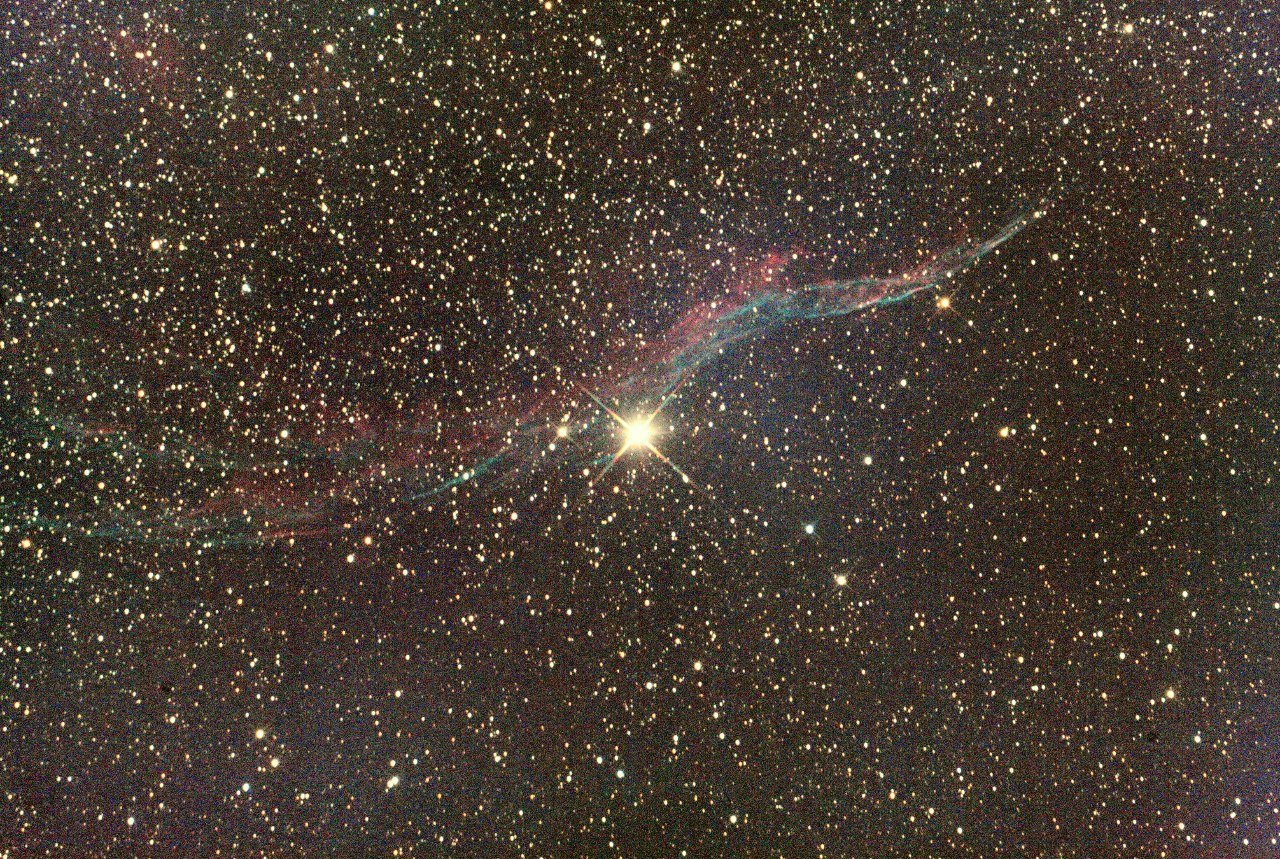
Witch's Broom Nebula (NGC 6960) is located in the direction of the constellation Cygnus, about 1,400 light-years away from our earth. It received its name, because of the peculiar shape, like a broom. In the center of the nebula, we can see the huge and bright star 52 Cygni, but it has nothing to do with our nebula. A variety of colors and original form, of attracting a many great amateur astronomers.
Туманность Ведьмина метла ( NGC 6960 ) расположена в направлении к созвездию Лебедя около 1400 световых лет от нашей земли. Свое название она получила из за своеобразной формы, похожей на метлу. По центру туманности мы можем видеть огромную и яркую звезду Лебедя, но она никак не связанно с нашей туманностью. Разнообразие цветов и оригинальная форма привлекает очень многих любителей астрономии
Photo by me. I used Сanon 550d ( iso 4000 , 53х25 sec) and Teleskope SW 150/750 EQ3
Nasa Explanation - http://apod.nasa.gov/apod/ap000823.html
And finally, the famous Iris Nebula
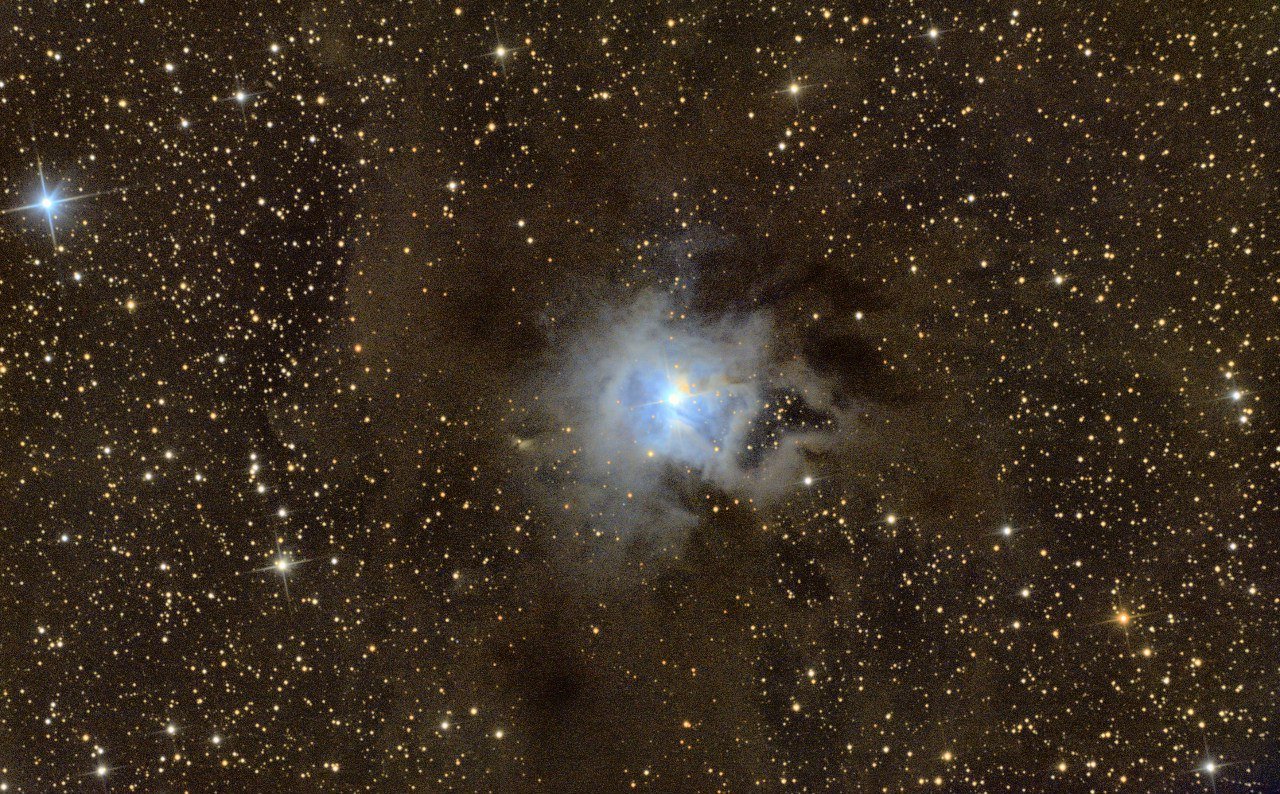
Iris Nebula (NGC 7023) is located 1,300 light-years away from of our earth. The discovery of a nebula did William Herschel October 18, 1794. Nebula in the constellation Cepheus. According to scientists, Iris have a particular contains hydrogen gas, thanks to which a new stars born. This is a unique view, like the flower ,in the center of which is a bright star. Thanks to her, we can see this beautiful blue outline.
Туманность Ирис ( NGC 7023 ) расположена в 1300 световыъ лет от нашей земли. Открытие туманности сделал Уильям Гершель 18 октября 1794 года. Туманность находится в созвездии Цефея. По данным ученым, в Ирисе содержится особенный газ водорода, благодаря которому появляются новые звезды. Это уникальное зрелище, похожее на цветок, в центре которого находится яркая звезда. Благодаря ей, мы можем видеть это прекрасное голубое очертание
Photo by me. I used Сanon 550d ( iso 800 , 40х125 sec and 20x300 sec ) and Teleskope SW 150/750 EQ3
Nasa Explanation - http://apod.nasa.gov/apod/ap120929.html
Don't forget to follow @luision
@gavvet features authors to promote new authors and a diversity of content. All STEEM Dollars for this post go to the featured author.
@luision is part of my current effort to promote foreign language writers writing in English and Russian
